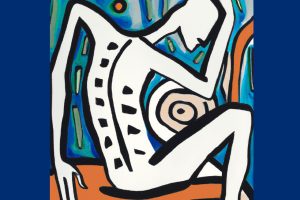
It’s a familiar story: you feel a twinge in your back and next thing you know, you can’t get out of bed. From back pain to achy joints, musculoskeletal pain, while common, can be life-changing and debilitating. But does it have to be?
That’s the big question for Jill Middendorf, an assistant professor of mechanical engineering at Johns Hopkins University who studies the mechanical factors that cause our cartilage, ligaments, and joints to break down.
“Our goal is to understand the degeneration process of musculoskeletal tissues, including cartilage, ligaments, and intervertebral discs, using advanced mechanics techniques,” Middendorf says. “If we understand why this process is happening, we hope to translate our findings into new methods to repair damaged tissues and prevent more pain,”
In a recent study published by the Journal of Biomechanical Engineering, Middendorf and collaborators sought to understand how the soft tissues of the spine change as spinal discs break down, or degenerate, over time.
Specifically, they looked at the facet capsular ligament—a soft tissue that holds the two sides of the facet joint together and is thought to be a common cause of lower back pain. Previous studies suggest this could be related to mechanical changes that occur in this ligament during spinal degeneration, though it’s not clear exactly why, Middendorf says.
To find out, the team extracted facet capsular ligaments from cadaver spines and ran experiments to measure the ligament’s mechanical properties, like stress and strain, under different loading conditions. By comparing MRI images of the spine and their experimental results, the team discovered that the tissues in the ligament became stiffer as the spine degenerated.
The researchers think this increased stiffness causes altered loading in surrounding tissues, and may explain why some people experience facet joint pain.
“Here we show that there is a correlation between the mechanics of the ligament and spine degeneration, which brings us even closer to being able determine if this ligament is causing pain or if it’s some other part of the spine,” Middendorf says.
With insights gathered from their tissue experiments, researchers in Middendorf’s lab plan to work next on furthering our understanding of spinal degeneration and creating engineered musculoskeletal tissue that can be implanted to replace damaged or diseased tissue.
However, when it comes to pain, answers aren’t always easy to find.
“‘One of the challenges associated with diagnosing and treating spine pain is determining the source of the pain,” Middendorf says. “But we can understand more about the causes and mechanisms of tissue damage, and that means we will someday be able to reverse engineer a solution.”